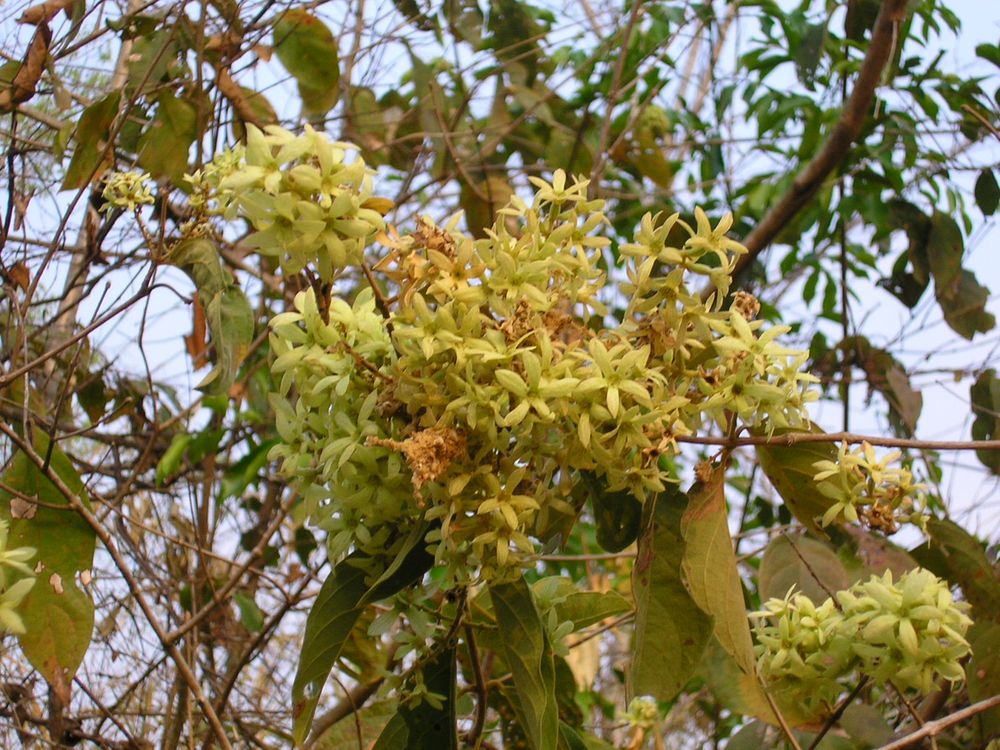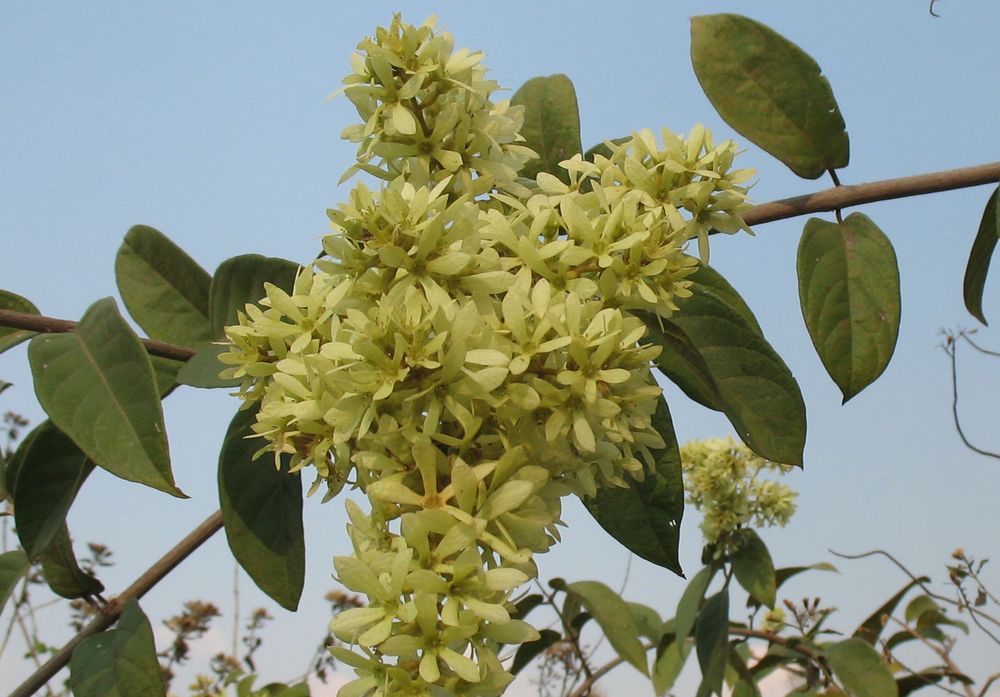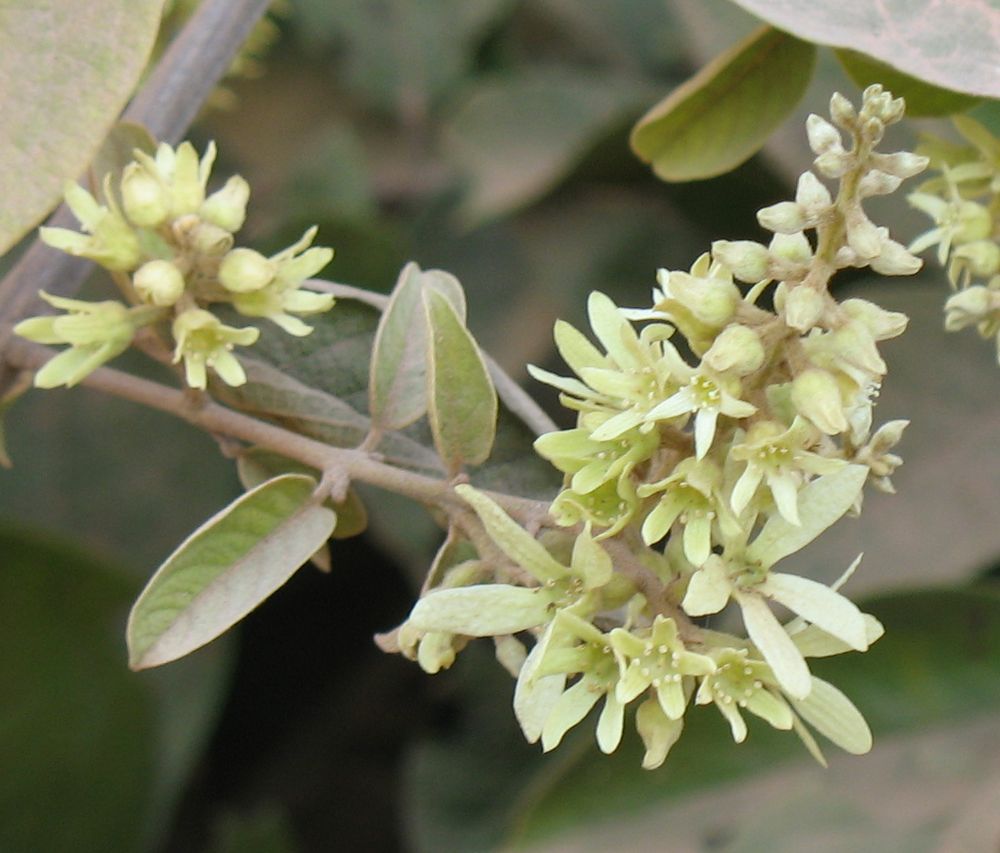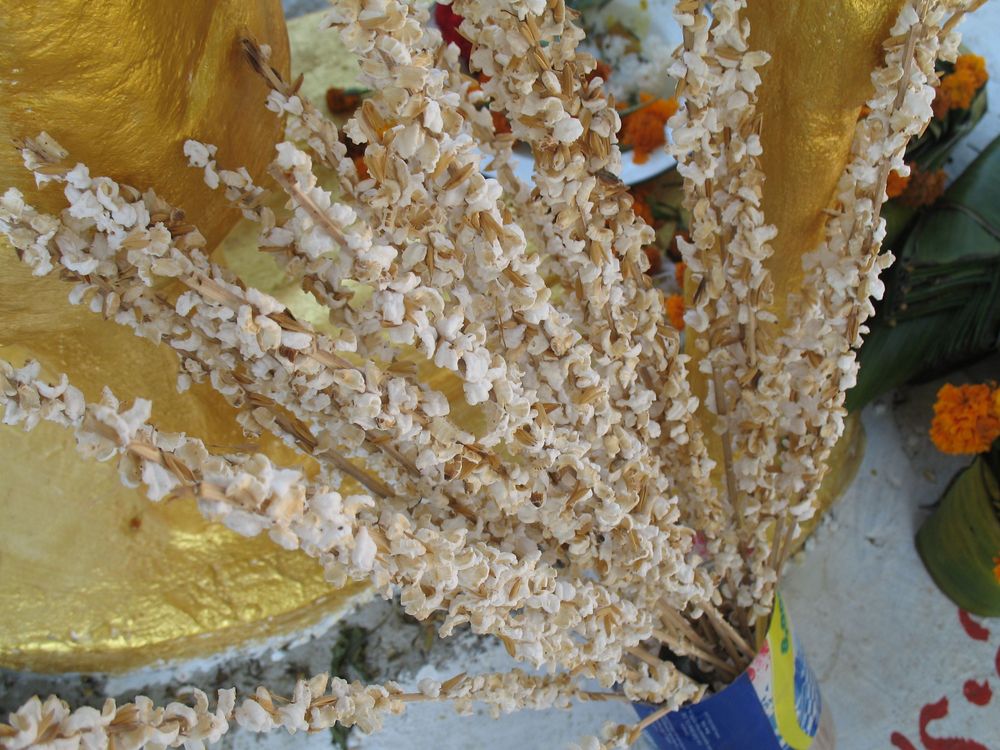You can admire the large woody bushes that this vine forms in the secondary and degraded forests of the Vientiane plain throughout the dry season. The flowers appear on the axis of the pubescent branches, they are small, without petals, in a cream-colored 5-lobed calyx. It is the mass of these calyxes which gives its decorative character to the plant which is more and more often planted in gardens. The Lao name “khao tok tèk” which means “grain of popped rice” refers to the offerings of popped rice made for certain festivals and which may resemble the flowers of this vine.
This plant, native to our region, also has medicinal properties: its leaves are said to be used to treat dysentery, its sap is used in the treatment of conjunctivitis.
Finally, let us add that the Indians are particularly interested in it, because it would have the ability to store water during the dry season.
On peut admirer les gros buissons ligneux que forme cette liane dans les forêts secondaires et dégradées de la plaine de Vientiane pendant toute la saison sèche. Les fleurs apparaissent à l’axe des branches pubescentes, elles sont petites, sans pétales, dans un calice à 5 lobes de couleur crème. C’est la masse de ces calices qui donne son caractère décoratif à la plante qui est de plus en plus souvent plantée dans les jardins. Le nom lao « khao tok tèk » qui signifie « grain de riz éclaté » fait référence aux offrandes de riz éclaté faites pour certaines fêtes et qui peuvent ressembler aux fleurs de cette liane.
Cette plante, originaire de notre région, a aussi des vertus médicinales: ses feuilles serviraient à soigner la dysenterie, sa sève est employée dans le traitement de la conjonctivite.
Ajoutons enfin que les Indiens s’intéressent particulièrement à elle, car elle aurait la faculté d’emmagasiner l’eau pendant la saison sèche.




You can admire the large woody bushes that this vine forms in the secondary and degraded forests of the Vientiane plain throughout the dry season. The flowers appear on the axis of the pubescent branches, they are small, without petals, in a cream-colored 5-lobed calyx. It is the mass of these calyxes which gives its decorative character to the plant which is more and more often planted in gardens. The Lao name “khao tok tèk” which means “grain of popped rice” refers to the offerings of popped rice made for certain festivals and which may resemble the flowers of this vine.
This plant, native to our region, also has medicinal properties: its leaves are said to be used to treat dysentery, its sap is used in the treatment of conjunctivitis.
Finally, let us add that the Indians are particularly interested in it, because it would have the ability to store water during the dry season.
On peut admirer les gros buissons ligneux que forme cette liane dans les forêts secondaires et dégradées de la plaine de Vientiane pendant toute la saison sèche. Les fleurs apparaissent à l’axe des branches pubescentes, elles sont petites, sans pétales, dans un calice à 5 lobes de couleur crème. C’est la masse de ces calices qui donne son caractère décoratif à la plante qui est de plus en plus souvent plantée dans les jardins. Le nom lao « khao tok tèk » qui signifie « grain de riz éclaté » fait référence aux offrandes de riz éclaté faites pour certaines fêtes et qui peuvent ressembler aux fleurs de cette liane.
Cette plante, originaire de notre région, a aussi des vertus médicinales: ses feuilles serviraient à soigner la dysenterie, sa sève est employée dans le traitement de la conjonctivite.
Ajoutons enfin que les Indiens s’intéressent particulièrement à elle, car elle aurait la faculté d’emmagasiner l’eau pendant la saison sèche.








You can admire the large woody bushes that this vine forms in the secondary and degraded forests of the Vientiane plain throughout the dry season. The flowers appear on the axis of the pubescent branches, they are small, without petals, in a cream-colored 5-lobed calyx. It is the mass of these calyxes which gives its decorative character to the plant which is more and more often planted in gardens. The Lao name “khao tok tèk” which means “grain of popped rice” refers to the offerings of popped rice made for certain festivals and which may resemble the flowers of this vine.
This plant, native to our region, also has medicinal properties: its leaves are said to be used to treat dysentery, its sap is used in the treatment of conjunctivitis.
Finally, let us add that the Indians are particularly interested in it, because it would have the ability to store water during the dry season.
On peut admirer les gros buissons ligneux que forme cette liane dans les forêts secondaires et dégradées de la plaine de Vientiane pendant toute la saison sèche. Les fleurs apparaissent à l’axe des branches pubescentes, elles sont petites, sans pétales, dans un calice à 5 lobes de couleur crème. C’est la masse de ces calices qui donne son caractère décoratif à la plante qui est de plus en plus souvent plantée dans les jardins. Le nom lao « khao tok tèk » qui signifie « grain de riz éclaté » fait référence aux offrandes de riz éclaté faites pour certaines fêtes et qui peuvent ressembler aux fleurs de cette liane.
Cette plante, originaire de notre région, a aussi des vertus médicinales: ses feuilles serviraient à soigner la dysenterie, sa sève est employée dans le traitement de la conjonctivite.
Ajoutons enfin que les Indiens s’intéressent particulièrement à elle, car elle aurait la faculté d’emmagasiner l’eau pendant la saison sèche.


